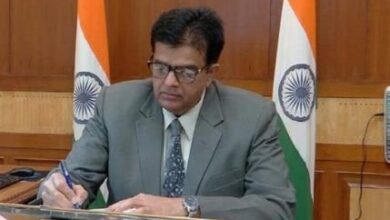Breaking News: Unpacking the Urgent in a 24/7 World

The shrill blare of a news alert. A banner flashed “BREAKING NEWS” across the screen. These are the attention-grabbing tactics that bombard us in today’s information age. But what exactly constitutes breaking news? Is it simply the newest development in a story, or is there more to it?
Breaking news, also known as late-breaking news, refers to events of significant importance that are unfolding or have just occurred. These events typically warrant immediate reporting due to their potential impact on a large audience. Think natural disasters, political upheavals, major scientific breakthroughs, or shocking crimes. The key element is urgency—the need for people to be informed as soon as possible.
Historically, breaking news was delivered through special bulletins interrupting radio and television broadcasts. Today, the digital age has transformed the landscape. News organizations have a constant stream of information flowing through websites, social media, and mobile apps. This 24/7 news cycle has blurred the lines of what truly qualifies as breaking news.
The hallmarks
Several factors distinguish genuine from the constant churn of information:
- Significance: Does the event have a widespread impact on a large number of people? For example, a local traffic accident might be newsworthy for residents in a specific area, but it wouldn’t rise to the level of breaking news.
- Time Sensitivity: Is there an immediate need for people to be aware of the event? This might be due to safety concerns, potential disruptions, or the need for public action.
- Uncertainty: Is the situation still developing? Are there unanswered questions or the potential for further escalation? Breaking news often deals with situations where details are still emerging.
- Credibility: Where is the information coming from? Reputable news organizations will verify information through multiple sources before labeling it breaking news.
The Challenges of the 24/7 News Cycle
While the constant flow of information allows for immediate updates, it also presents challenges. The pressure to be first with the news can lead to inaccuracies. Incomplete information or reliance on unverified social media reports can create a fog of confusion.
Furthermore, the constant barrage of alerts can lead to “alert fatigue.” People become desensitized to the urgency, potentially neglecting genuinely important stories. Breaking news can also be misused for sensationalism, prioritizing dramatic narratives over fact-based reporting.
Navigating the breaking news landscape
Here are some tips for effectively navigating the ever-present:
- Prioritize trusted sources: Seek your news from established news organizations with a track record of accuracy and responsible journalism.
- Be discerning with social media. Social media can be a valuable source of, but it’s essential to verify information through multiple sources before accepting it as fact.
- Beware of alert overload. Adjust your news notification settings to avoid information overload. Focus on receiving alerts from reliable sources for truly significant events.
- Dig deeper: Don’t let headlines be the only source of information. Seek out in-depth reporting that provides context and analysis.
The Future
The future of breaking news will likely continue to be shaped by technological advancements. Artificial intelligence and automation can play a role in filtering information, identifying potential stories, and even generating initial reports.
However, the human element remains crucial. Journalists play a vital role in verifying information, providing context, and analyzing the broader significance of events. By developing critical media literacy skills and prioritizing trusted sources, we can be informed citizens in a world bombarded with.



